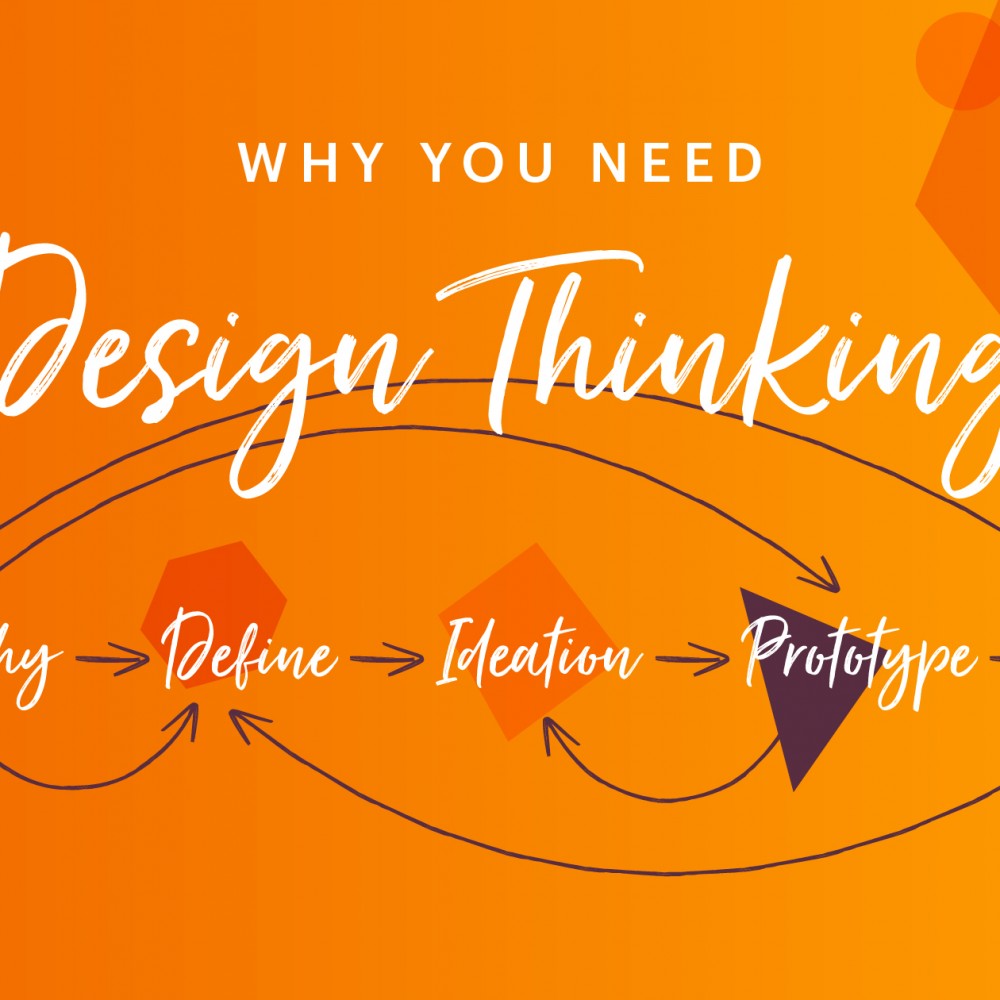
Design thinking has become increasingly popular in recent years as a way of problem solving for businesses. When somebody mentions ‘design’ the first thoughts that often come to mind are to do with visuals and creating something that is aesthetically pleasing. However, the ‘design thinking’ process has been found to be hugely effective in coming up with innovative answers to almost any business problem that has a user need . It does this by focusing on the solution, rather than the problem. The good news is anybody can utilise the process, you don’t have to be a designer or engineer.
The starting point for the design thinking process is the end user; who will be using the service or product we need a solution for, and it is this focus on the human element that sets the process apart from other ways of problem solving. It’s about accepting the existing way of doing something is not necessarily right, and focusing on what is going to work effectively now for the person using it.
Some of the world’s most successful businesses have pioneered and adopted the design thinking approach; including Starbucks, Nike, Toyota and Microsoft, and it is now being taught in universities worldwide. Apple have been one of the cheerleaders in the approach since Steve Jobs revolutionised Apple’s strategy in the late 90’s (and they’ve not done too badly since!). He changed the focus of the business to the following:
Yes, these are focused on a consumer-based product offering, however within almost any service or product offering there is always a human need at the end of the process.
It is a developmental process that empathises with users, challenges assumptions and creates innovative solutions to problems.
The process is broken down into the five stages outlined below:
This stage is all about discovery; gaining a deep understanding of the problem by engaging, observing and experiencing first-hand rather than solely relying on data. This allows the problem to be revealed in a meaningful way so the observer can empathise with any issues and needs that a user may have. The information available from other sources such as data and individuals’ opinions are relevant but this empathetic stage deepens our understanding and gives a more in-depth perspective. Part of being empathetic is reserving judgement, setting aside what you think something should be and understanding another point of view.
Once we have observed and found information from the empathise stage, we need to bring everything together, so that we can articulate and define the key problems to be solved, the needs of the user and the insights gained. This stage establishes a consensus of opinion about where the focus needs to be. The statement we make here should be succinct and have a human-centred focus.
Example:
Data driven focus: ‘We need to grow the sales of our xxxxx medicine by 30%’
Human centred focus: ‘Patients need better tools to be able to administer our xxxxx medicine effectively at home’
We can begin to start generating ideas once we have a good understanding of our user and of the problem to be solved . Designers come up with a range of creative solutions that seek to ‘think outside of the box’ in answering the problem. There may be a number of very different solutions, but they will all be centred on a defined goal. When a number of solutions have been developed, we should have a range of creative ideas to move forward with.
With a number of good solutions on the table, the next stage of the process is to create a prototype. This is an essential stage in guaranteeing a solution works effectively in its final form. It can be a very simple working version of the solution to evaluate whether the idea works in practice. A prototype will have all the essential ‘working’ features of the final piece, but be produced quickly and at low cost.
The testing stage should be rigorous and help to build a deeper understanding of how effectively the ideas work. This stage can take place several times and at different points throughout the process by different groups; from the designers creating the ideas to the client reviewing the ideas and to user groups testing prototypes. The design process is not a linear one – which is one of its key strengths; and testing enables us to gather feedback and redefine the solutions along the way.
It is important to always keep in mind the end user and think about how they are likely to interact with the solution being produced, as this is key to producing a strong, effective outcome.
It’s time to make design thinking one of your business solutions.
At Onyx Health we offer bespoke digital communication solutions for continued customer engagement. Learn more about our digital services here.